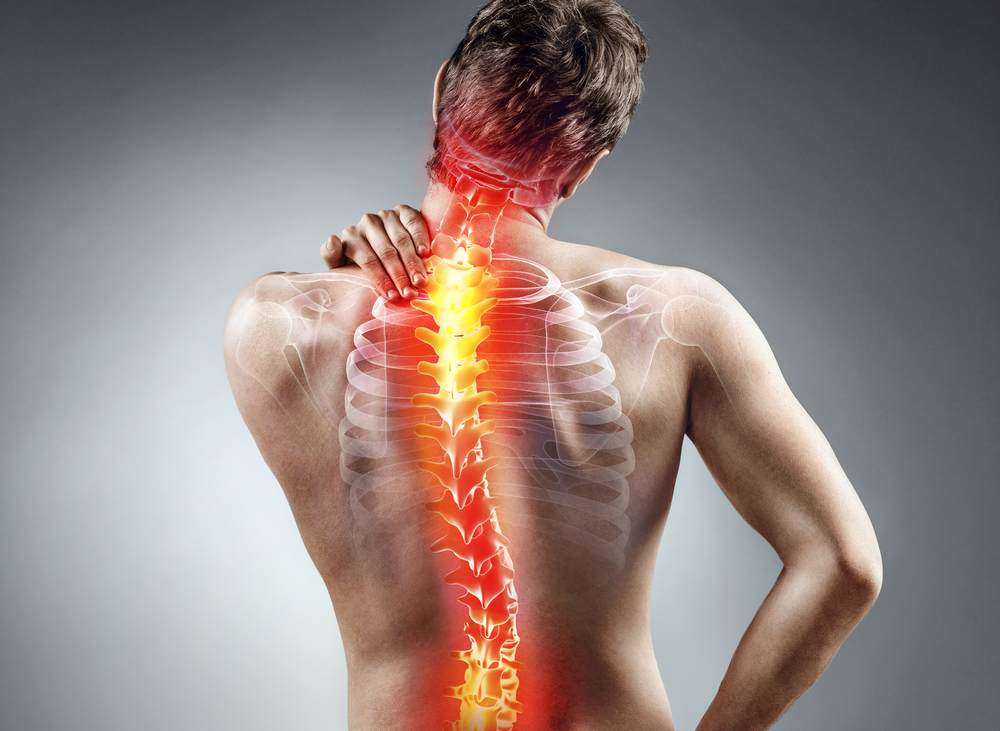Suffering from neck or back pain? Avoid these mistakes when self-diagnosing your symptoms


Types of Back Pain
Cervical or neck pain can be caused for example by poor posture from bending over your computer or sleeping incorrectly on the wrong type of pillow. It can be a simple muscle cramp or a more painful pinched nerve. This type of pain will often dissipate once you correct the cause.
According to Harvard Health, there are 7 types of cervical pain:
- Muscle strains, sprains, and tears
- Muscle spasm
- Headache
- Facet joint pain
- Nerve pain
- Referred pain
- Bone pain (1)
Lumbar or back pain can be more complicated to diagnose because of the various parts that make up the spine. Causes include:
- Injury to a disc
- Joint pain
- Nerve pain
- Inflammation in the spinal joints
- Chronic pain disorders (2)
Most cases of back pain are labeled “non-specific” because doctors can find no evidence of any mechanical issues, like a bulging disc or a compressed nerve. Typical non-specific causes of back pain include:
- Chronic inflammation
- Being out of shape
- Low Vitamin D levels
- Chronic Stress
- Myofascial trigger points
- Awkward sleeping position
- Poor posture (3)
When Is Back Pain Serious?
If it is just a simple strain from a hard workout or from lifting something wrong, your body should respond well to simple rest and anti-inflammatory medications. Applying ice to the injured area within the first 72 hours can also help relieve the inflammation and pain.
More serious back pain can range from a muscle aching to a shooting, burning, or stabbing sensation. In addition, the pain may radiate down your leg or arm. It may worsen with bending, twisting, lifting, standing, or walking.
Nerves often become compressed and irritated by a variety of factors. In addition to pain, pressure on the nerves can cause a reduction in range of motion, lack of strength, and accompanying numbness. If the pain does not resolve on its own, it may require medical attention, including surgery, to prevent permanent damage.
According to Johns Hopkins Medicine, any numbness or weakness is a sign that you should see your doctor as soon as possible. Numbness in the hand or foot indicates that there may be nerve damage that could become permanent if not corrected within a few days.
Two of the most serious symptoms of neck or back pain are weakness in both legs and the loss of bowel and bladder control. Any traumatic injury also should be evaluated immediately by a doctor to check for possible fractured vertebrae. (4)
And further information from Spine Health regarding symptoms to watch for that require immediate medical attention:
- Difficulty or inability to control bowel movements
- Difficulty in passing urine,
- Numbness in the groin, buttocks, genitals, and/or inner thighs
- Sexual dysfunction
- Difficulty lifting a leg, paralysis in legs or arms
- Tumors, spinal infection, acute trauma (5)
Self-Diagnosing Mistakes
Back pain is considered the most common musculoskeletal cause for emergency room visits and typically involves individuals aged 18 to 65 years. When dealing with severe back pain, making a judgment call about whether to seek help can be difficult. (6)
Some people will try to self-diagnose and treat back pain exclusively with at-home methods and remedies. Treatment for back pain should be chosen specifically according to your condition and your medical history. Some patients who attempt to treat their back pain without medical consultation may negatively impact their spine condition and cause more pain than what they originally experienced.
“In this day and age of limited time with doctors coupled with ample opportunity to google anything, the temptation for people to reach their own conclusions about their illness is strong,” says Psychology Today.
The at-home remedy you find on the internet might not even be related to your spine condition, which means you won’t find any results from it. It could even cause you more injury because these remedies are not personalized for your specific pain.
The Laser Spine Institute mentions the following mistakes to be aware of when self-diagnosing:
- Guessing the likely cause of back pain. An accurate diagnosis requires a review of medical history, specific movement tests, and diagnostic tests like an X-ray, CT scan, or MRI.
- Not making the right lifestyle changes. Lifestyle factors like being overweight, having poor posture, and using tobacco products are often associated with chronic back pain, but you should still consult with your doctor to develop a personalized plan that is right for your needs.
- Becoming too sedentary. Rest is an important part of the treatment process, but it can actually worsen your spine health if you become too inactive. For people with a spine condition, safely exercising to improve mobility and strengthen supporting muscles may require the assistance of a physical therapist. (7)
The DISC Spine Institute gives these five reasons you should be aware of if you have recurrent or chronic back pain:
- The chronic back pain probably won’t go away on its own
- You may not be aware of the seriousness of an injury or condition
- You may think it’s the same thing you’ve experienced before
- You don’t realize it can progress to something worse
- The treatment (or lack of) could be doing you more harm in other ways (8)
This advice all points to the fact that before you self-diagnose your back pain, you should check with a qualified medical professional. A consultation and diagnostic tests could tell you the cause of your pain and the best treatment, even if it confirms your own self-diagnosis. This will put you on a path of the best recovery without delaying or complicating it.
Sources
- https://www.health.harvard.edu/pain/7-faces-of-neck-pain
- https://cornerstonephysio.com/resources/5-types-of-back-pain/
- https://t2conline.com/morning-back-pain-you-could-have-a-more-serious-problem/
- https://www.hopkinsmedicine.org/health/conditions-and-diseases/back-pain
- https://www.spine-health.com/conditions/lower-back-pain/when-back-pain-may-be-medical-emergency
- Corwell BN. The emergency department evaluation, management, and treatment of back pain. Emergency Medicine Clinics of North America. 2010;28(4):811-839. DOI: 10.1016/j.emc.2010.06.001
- https://www.lsi.philayres.com/beendoctors/section/lifestyle/25/mistakes/174/
- https://www.discspine.com/back-stories/dangers-self-diagnosing-chronic-back-pain/









